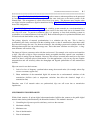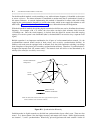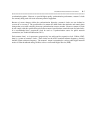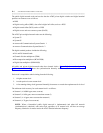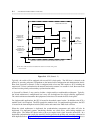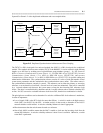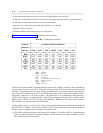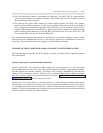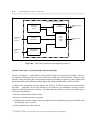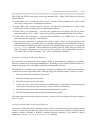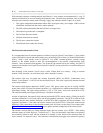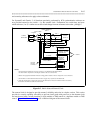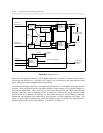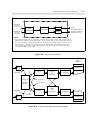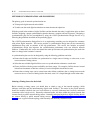SYNCHRONIZATION OF DIGITAL FACILITIES B-11
_ ______________________________________________________________________________________
_ ______________________________________________________________________________________
_ ______________________________________________________________________________________
• The LED in position #5 refers to the secondary DS1 reference. The LED is OFF if a synchronization
signal is present and the SCS is capable of locking. The #5 LED is ON if an error condition exists and
the synchronization cable is present.
• The following four yellow LEDs indicate the selected timing reference: #14 (HAC), #15 (primary
reference), #16 (secondary reference), and #17 (cross-coupling). When the system is first brought up
and no references are administered, the HAC LED should be lit for the online SCS and the cross-
coupling LED should be lit for the offline SCS. Shortly after the DS1 references are administered, the
primary reference LED should turn on and the HAC LED should turn off for the online SCS. The
cross-coupling LED is the only one lit for the offline SCS.
The synchronization subsystem described above also functions as a periodic maintenance monitor. Status
detected during the synchronization process is passed along to other levels of maintenance software for
processing. This processing includes error logging for procedure 600 and alarming.
CHANGES TO THE SCS SOFTWARE MADE AVAILABLE VIA SOFTWARE PATCHES
The following changes (regarding the SCS software) may apply, providing that the appropriate patches
have been installed.
System 75 and Generic 1 Synchronization Architecture
System 75 and Generic 1 can function as either a timing slave or timing master. As a slave, the switch
receives digital data from one or two DS1s. One interface supplies the primary synchronization reference;
the other supplies the secondary reference. The timing source selected is determined by the tone-clock
circuit pack and maintenance software. The tone clock synchronizes (phase locks) to either the primary
reference, secondary reference, or the internal high-accuracy clock. Figure B-6, Tone-Clock Synchronizer
(Nonduplicated, Generic 1), shows the tone clock circuit.
The DS1 that is used as the primary or secondary reference is totally dependent on administration details.
Although there are no restrictions on placing one or both synchronization references in the second cabinet,
it is recommended that the references be located in the first cabinet (processor port network) to maximize
reliability. The tone clock generates the call-processing system tones and also provides the switch with the
stratum-4 clock in the absence of a reliable reference.



